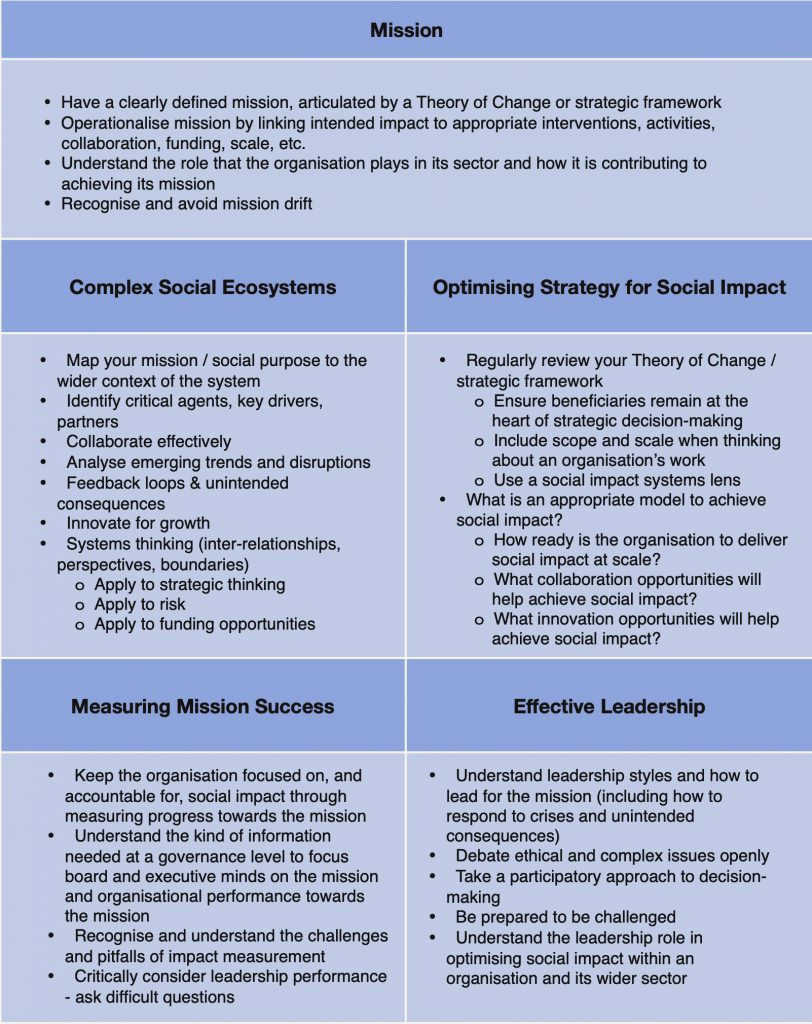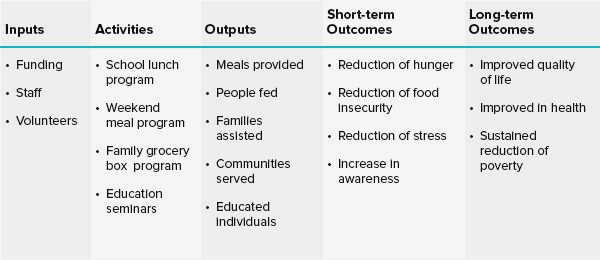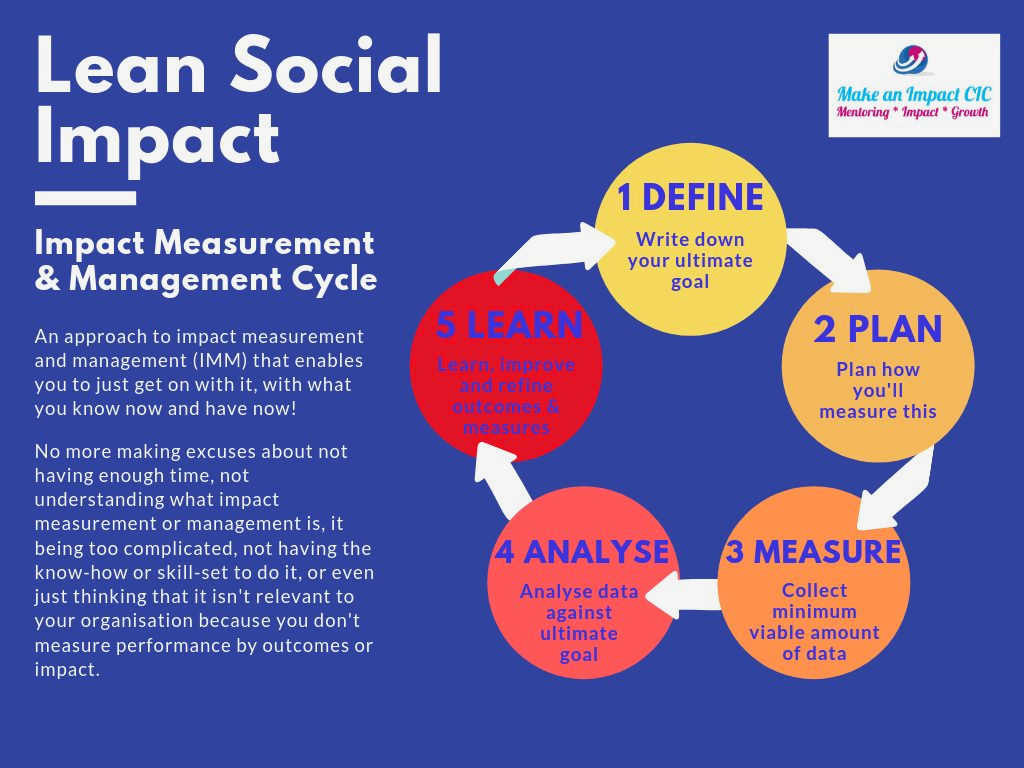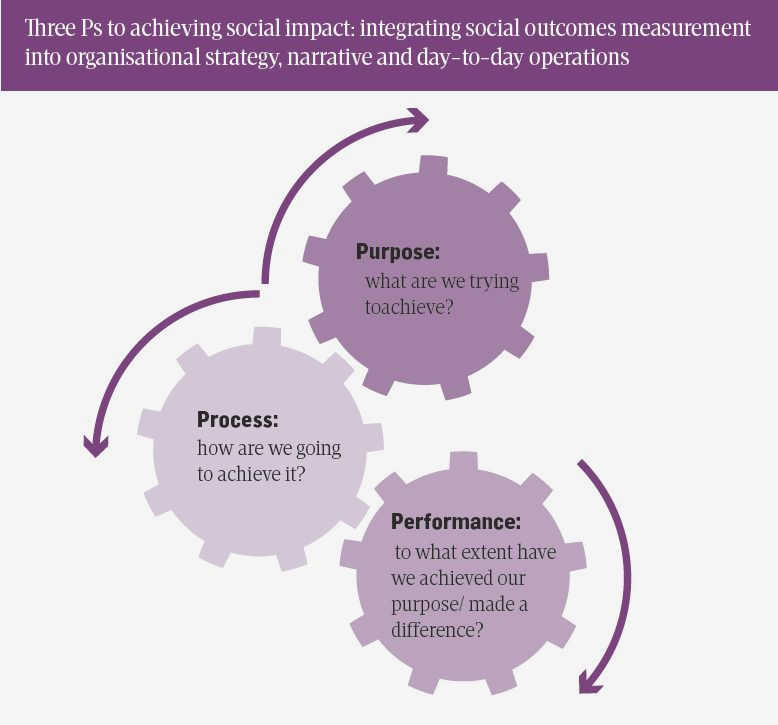In today’s rapidly changing world, civil society organizations play a crucial role in addressing social challenges and promoting positive change. Whether it is enhancing education, empowering marginalized communities, or protecting the environment, these organizations are driven by their desire to make a meaningful impact on society. However, to truly understand the effectiveness of their efforts, it is essential for these organizations to have a systematic and rigorous approach to measuring their social impact.
Social impact measurement is the process of assessing and quantifying the social change that is brought about by an organization’s activities. It involves identifying the outcomes and impacts of interventions and understanding the ways in which these outcomes can be attributed to the organization’s efforts. Through social impact measurement, civil society organizations are able to evaluate the effectiveness of their programs, identify areas for improvement, and demonstrate accountability to their stakeholders.
The importance of social impact measurement in civil society cannot be overstated. By measuring their social impact, organizations are able to determine whether they are achieving their intended outcomes and making a positive difference in the lives of their target beneficiaries. This not only helps them in refining their strategies and allocating resources effectively but also enables them to communicate their impact to funders, partners, and the wider community.
Furthermore, social impact measurement enables civil society organizations to contribute to the growing field of evidence-based practice. By collecting data, analyzing results, and drawing conclusions, organizations can contribute to the knowledge base in their respective fields and inform decision-making processes. This not only benefits their own organization but also helps to advance the sector as a whole, leading to more effective and impactful interventions in the future.
In conclusion, social impact measurement is a vital tool for civil society organizations to assess the effectiveness of their interventions and achieve meaningful outcomes. By implementing robust measurement frameworks, organizations can gain valuable insights into their impact, improve their programs, and contribute to the broader field of social change. As the world continues to grapple with complex social challenges, it is imperative that civil society organizations embrace social impact measurement as an integral part of their work.
The Role of Social Impact Measurement in Civil Society
Social impact measurement plays a crucial role in civil society by providing organizations with the necessary tools to assess and evaluate their effectiveness in achieving meaningful outcomes. It allows them to quantify and communicate the social and environmental benefits of their work, providing evidence of their impact to stakeholders and donors.
One of the main benefits of social impact measurement is that it enables organizations to make evidence-based decisions and improve their program delivery. By collecting and analyzing data on the outcomes and impacts of their interventions, organizations can identify strengths and weaknesses and make informed adjustments to their strategies and activities.
Furthermore, social impact measurement promotes transparency and accountability within civil society. By measuring and reporting on their impact, organizations demonstrate a commitment to their mission and values. This helps to build trust with stakeholders, such as funders, partners, and the community, and enhances their reputation and credibility.

Another important role of social impact measurement is the ability to demonstrate the value for money of social interventions. By quantifying the social and environmental benefits, organizations can compare their outcomes to the resources invested and determine the most cost-effective ways to achieve social change. This information is valuable for decision-makers and funders who are looking to invest in programs and initiatives that produce the greatest impact.
In conclusion, social impact measurement plays a crucial role in civil society by enabling organizations to assess and communicate their effectiveness, make evidence-based decisions, promote transparency and accountability, and demonstrate the value for money of their interventions. It is a powerful tool that empowers organizations to achieve meaningful outcomes and drive social change.
Measuring Impact for Improved Accountability
In today’s civil society, there is a growing need for organizations to demonstrate accountability and transparency in their operations. This is especially true for organizations focused on social impact and making a difference in the lives of others. One way to achieve this is through the measurement of impact.
Measuring impact allows organizations to assess the effectiveness of their programs and initiatives, and determine if they are achieving their intended outcomes. It provides concrete data and evidence that can be used to hold organizations accountable for their actions and results.
By measuring impact, organizations can:
- Evaluate program effectiveness: Impact measurement allows organizations to assess whether their programs are having the desired effect on the individuals or communities they serve. It helps identify areas for improvement and make data-driven decisions for future initiatives.
- Inform decision-making: Impact data provides valuable insights that can inform the decision-making process. It helps organizations allocate resources more efficiently, identify successful strategies, and replicate effective interventions.
- Enhance stakeholder engagement: Measuring impact allows organizations to engage with stakeholders, such as donors, beneficiaries, and partners, in a more informed and transparent manner. It builds trust and credibility, as stakeholders can see the tangible outcomes and impact their support has achieved.
- Enable learning and knowledge sharing: The process of measuring impact encourages organizations to learn from their experiences and share best practices with others. It promotes a culture of continuous improvement and fosters collaboration among organizations working towards similar goals.
- Advocate for change: Impact data can be a powerful tool for advocacy and influencing policy decisions. It provides objective evidence of the social issues organizations are addressing and the impact they are making, which can help drive change at a systemic level.
In conclusion, measuring impact is crucial for organizations in civil society to improve accountability. It enables them to evaluate their programs, inform decision-making, enhance stakeholder engagement, facilitate learning and knowledge sharing, and advocate for change. By embracing impact measurement, organizations can demonstrate their commitment to achieving meaningful outcomes and making a positive difference in the world.
Evidence-Based Decision Making for Increased Effectiveness
Evidence-based decision making is a crucial practice for increasing the effectiveness of civil society organizations. It involves gathering and analyzing data to inform decision making and improve outcomes. By using objective and reliable evidence, organizations can better understand the impact of their programs and interventions, identify areas for improvement, and make informed decisions about resource allocation.
To engage in evidence-based decision making, organizations need to collect relevant data through various methods such as surveys, interviews, and observation. They should also establish clear indicators and benchmarks to measure progress and success. This data can then be analyzed using statistical techniques and other qualitative methods to extract meaningful insights.
By basing decisions on solid evidence, organizations can avoid guesswork and rely on facts and figures. This helps them prioritize initiatives that have the most significant impact and allocate resources effectively. It also allows organizations to evaluate the success of their interventions and make adjustments if needed.
Evidence-based decision making also promotes transparency and accountability. By documenting and sharing the evidence behind their decisions, organizations can demonstrate to stakeholders that they are making informed choices based on credible information. This builds trust and credibility, which are key for attracting donors, partners, and other stakeholders.
Moreover, by continually collecting and analyzing data, organizations can adapt and improve their programs over time. They can identify trends, uncover patterns, and learn from their successes and failures. This iterative process allows organizations to refine their strategies and maximize their impact.
In summary, evidence-based decision making is essential for increasing the effectiveness of civil society organizations. By relying on objective data and analysis, organizations can make informed decisions, improve their outcomes, and build trust with stakeholders. Adopting this practice can lead to more impactful programs and interventions that address the needs of communities effectively.
Understanding the Long-Term Effects of Social Programs
The long-term effects of social programs play a crucial role in determining their overall impact and success. It is important to understand how these programs can create lasting change and improve the lives of individuals and communities. Evaluating the long-term effects allows us to assess the sustainability and effectiveness of social interventions, as well as identify areas for improvement.
Measuring the long-term effects of social programs involves tracking outcomes and impacts over an extended period of time. This requires a comprehensive and systematic approach to data collection, analysis, and evaluation. By monitoring the progress and outcomes of individuals participating in social programs over the long term, we can gain insights into the lasting effects and determine whether the desired outcomes are being achieved.
Benefits of understanding the long-term effects
1. Program improvement: By understanding the long-term effects of social programs, we can identify areas that need improvement or adjustment. This information can be used to optimize program design and delivery, ensuring that resources are allocated effectively and interventions are tailored to meet the needs of beneficiaries.
2. Policy development: Understanding the long-term effects of social programs can inform policy development and decision-making. By evaluating the lasting impact of different interventions, policymakers can make informed choices about which programs to invest in and prioritize.
3. Accountability: Measuring the long-term effects of social programs provides a basis for accountability. It allows funders, organizations, and stakeholders to assess whether their investments are achieving the desired outcomes and making a meaningful impact. This transparency can help drive accountability and ultimately lead to better outcomes for those being served by social programs.
4. Sustainability: By understanding the long-term effects, we can assess the sustainability of social programs. This involves evaluating whether the positive changes brought about by these interventions can be maintained over time. Evaluating the long-term effects helps organizations and policymakers design interventions that have a lasting impact and contribute to long-term social change.
In conclusion, understanding the long-term effects of social programs is crucial for assessing their overall impact and success. By measuring these effects, we can improve program design, inform policymaking, drive accountability, and promote sustainability. Evaluating the long-term outcomes allows us to make data-driven decisions and ultimately create meaningful and lasting change in civil society.
Aligning Metrics with Organizational Goals
To effectively measure and evaluate social impact, it is crucial for civil society organizations to align their metrics with their organizational goals. Metrics serve as a tool to track progress, monitor performance, and assess the effectiveness of programs and initiatives. However, if the metrics used do not align with the overall objectives of the organization, they may not provide meaningful insights or accurately reflect the impact being made.
Clarifying organizational goals: Before determining which metrics to measure, civil society organizations need to clearly define their organizational goals. This involves identifying the intended social impact, understanding the target audience, and outlining the specific outcomes they aim to achieve. By having a clear understanding of their goals, organizations can then select metrics that directly align with these objectives.

Selecting appropriate metrics: Once the organizational goals are established, the next step is to select metrics that accurately measure progress towards those goals. It is important to choose metrics that are relevant, specific, and measurable. This may involve identifying key performance indicators (KPIs) that reflect the desired outcomes and using quantitative or qualitative data sources to track progress over time.
Regular evaluation and adjustment: Metrics should not be static; they should be regularly evaluated and adjusted as needed. Civil society organizations should continuously review their metrics to ensure they are still aligned with the organizational goals and are effectively capturing the desired social impact. This may involve revisiting and revising the metrics based on feedback, new insights, or changes in the external environment.
Communicating the alignment: It is not enough for civil society organizations to internally align their metrics with their goals; they must also communicate this alignment to stakeholders. By clearly articulating how the selected metrics directly measure progress towards the organization’s goals, they can enhance transparency, build trust, and ensure that the metrics are understood and valued by stakeholders.
By aligning metrics with organizational goals, civil society organizations can ensure that their measurement efforts are both meaningful and effective. This alignment allows organizations to accurately capture and demonstrate the social impact they are making and make informed decisions for program improvement and resource allocation.
Tracking Progress and Identifying Areas for Improvement
Tracking progress and identifying areas for improvement are essential components of social impact measurement in civil society. By regularly monitoring and evaluating the outcomes and impact of social programs, organizations can ensure that they are effectively achieving their goals and making a positive difference in their communities.
One way to track progress is through the use of quantitative and qualitative data. Quantitative data, such as surveys and statistical analysis, can provide measurable indicators of progress and impact. On the other hand, qualitative data, such as interviews and case studies, can provide a more in-depth understanding of the experiences and perspectives of individuals affected by the programs.
Another important aspect of tracking progress and identifying areas for improvement is setting clear and realistic goals. By defining specific and achievable objectives, organizations can measure their progress and make necessary adjustments to their strategies and approaches. Regular monitoring and evaluation can help identify any gaps or shortcomings in the program design or implementation and provide insights on how to address them.
It is also beneficial for organizations to engage stakeholders and beneficiaries in the evaluation process. By soliciting feedback and input from those directly impacted by the programs, organizations can gain valuable insights into the effectiveness and relevance of their initiatives. This participatory approach can enhance accountability, transparency, and collaboration, leading to more meaningful outcomes and sustainable social impact.
In summary, tracking progress and identifying areas for improvement play a crucial role in social impact measurement. By using both quantitative and qualitative data, setting clear goals, and involving stakeholders in the evaluation process, organizations can ensure that their efforts are making a real difference in the lives of the communities they serve.
Building Trust and Transparency through Impact Measurement
Transparency and trust are essential elements in any successful civil society organization. Donors, stakeholders, and beneficiaries need to have confidence in the work an organization is doing and the impact it is making. Impact measurement plays a crucial role in building this trust and transparency.
By implementing effective impact measurement strategies, organizations are able to demonstrate the tangible outcomes and social impact that their programs and initiatives are achieving. This provides evidence of their credibility and effectiveness, which in turn builds trust with funders and supporters.
Impact measurement also promotes transparency within organizations. It requires organizations to collect, analyze, and report data on their activities and outcomes. This process ensures that there is clear documentation of the resources invested, the goals and objectives set, and the results achieved. This level of transparency helps to build trust with stakeholders by showing that an organization is accountable and committed to achieving meaningful outcomes.
Furthermore, impact measurement provides an opportunity for organizations to learn and improve. By evaluating the impact of their programs and initiatives, organizations can identify areas of strength and areas for improvement. This data-driven approach allows for evidence-based decision making and the ability to refine strategies to maximize impact.
In conclusion, impact measurement is a powerful tool for building trust and transparency in civil society organizations. By showcasing the tangible outcomes and social impact achieved, organizations can demonstrate their credibility and effectiveness. Additionally, impact measurement promotes transparency and accountability within organizations. It allows for evidence-based decision making and continuous improvement. Overall, impact measurement plays a vital role in ensuring trust and transparency in the work of civil society organizations.
Engaging Stakeholders in the Measurement Process
Engaging stakeholders is a crucial part of the social impact measurement process in civil society organizations. By involving stakeholders in the measurement process, organizations can ensure that their perspective and input are taken into account, leading to a more comprehensive understanding of the impact of their work. This engagement also fosters transparency and accountability, as stakeholders have a better understanding of the measurement methods and can provide feedback and input.
One way to engage stakeholders is to involve them in the design of the measurement framework. This can be done through focus groups, surveys, or workshops where stakeholders can share their opinions and insights on what outcomes should be measured and how. By involving stakeholders in the design phase, organizations can ensure that the measurement framework is relevant, meaningful, and aligned with the needs and priorities of the community they serve.

Engaging stakeholders in the measurement process also allows for a more inclusive approach. Civil society organizations often work with diverse groups of stakeholders, including beneficiaries, donors, partners, and community members. By involving these different stakeholders in the measurement process, organizations can capture a holistic and multi-dimensional view of their impact. This inclusive approach not only enriches the measurement process but also strengthens relationships and trust between the organization and its stakeholders.
Furthermore, engaging stakeholders in the measurement process can lead to increased ownership and buy-in. When stakeholders are involved from the beginning and their input is valued, they are more likely to support and participate in the measurement efforts. This collaboration and shared responsibility for measurement can contribute to the sustainability and long-term success of the social impact measurement process.
In conclusion, engaging stakeholders in the measurement process is essential for civil society organizations to achieve meaningful outcomes. By involving stakeholders in the design, implementation, and evaluation of the measurement framework, organizations can ensure that their impact measurement efforts are comprehensive, relevant, and inclusive. This engagement fosters transparency, accountability, and ownership, ultimately leading to improved social impact and a stronger civil society sector.
Using Impact Data to Drive Funding and Investor Decisions
Impact data plays a crucial role in driving funding and investor decisions in the civil society sector. With increasing focus on social impact, funders and investors are looking for evidence of the effectiveness and outcomes of their investments. They want to see measurable results and a clear understanding of the impact their resources are making.
By using impact data, organizations can effectively demonstrate the value and importance of their work, making it more likely to attract funding and investment. Impact data provides concrete evidence of the positive change that an organization is creating in the society, making its mission more compelling and attractive to funders and investors.

Impact data allows funders and investors to evaluate the social, environmental, and economic outcomes of an organization’s activities. It helps them understand the reach and scale of the impact and assess the effectiveness of the organization’s strategies and interventions. By having access to reliable impact data, funders and investors can make informed decisions about where to allocate their resources for maximum impact.
Furthermore, impact data can also help organizations build trust and credibility with funders and investors. By showcasing the impact they have achieved through concrete data, organizations can demonstrate their accountability and transparency. This increases confidence and trust in the organization’s ability to deliver meaningful results and can lead to increased funding and investment opportunities.
In summary, impact data is a powerful tool for driving funding and investor decisions in the civil society sector. It provides evidence of the effectiveness of an organization’s work, helps evaluate outcomes, and builds trust and credibility. By leveraging impact data effectively, organizations can attract the funding and investment required to make a greater social impact.
Continuously Evaluating and Adapting Programs for Better Outcomes
Evaluating and adapting programs is crucial to achieving better outcomes and maximizing social impact in civil society. By continuously assessing the effectiveness of programs, organizations can identify areas for improvement and make necessary adjustments to ensure they are meeting their goals and making a meaningful difference.
The Importance of Evaluation
Evaluation plays a crucial role in measuring the success of programs and determining their impact on the community. It allows organizations to gather data and evidence about the effectiveness of their interventions, helping them understand what works and what doesn’t. Through evaluation, organizations can also identify any unintended consequences or negative effects of their programs, enabling them to address these issues and make necessary changes.
Adapting Programs for Better Outcomes
Adaptation is the key to improving programs and achieving better outcomes. By analyzing evaluation data and feedback from stakeholders, organizations can identify areas where their programs can be enhanced or modified. This could involve adjusting program strategies, reallocating resources, or implementing new interventions based on the identified needs and challenges. Adapting programs allows organizations to be more responsive to the changing needs of the communities they serve and ensures that they are delivering the most effective and relevant services.
Moreover, a continuous evaluation and adaptation process enables organizations to learn from their experiences and share best practices with others in the field. It fosters a culture of learning and improvement, where organizations can build on their successes and learn from their failures. Through this process, organizations can contribute to the wider body of knowledge in the civil society sector and drive innovation in their programming.
In conclusion, continuously evaluating and adapting programs is essential for achieving better outcomes and maximizing social impact. It allows organizations to assess the effectiveness of their interventions, identify areas for improvement, and make necessary adjustments. By embracing a culture of evaluation and adaptation, organizations can ensure they are delivering the most effective and impactful programs to the communities they serve.





